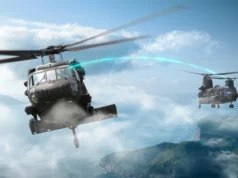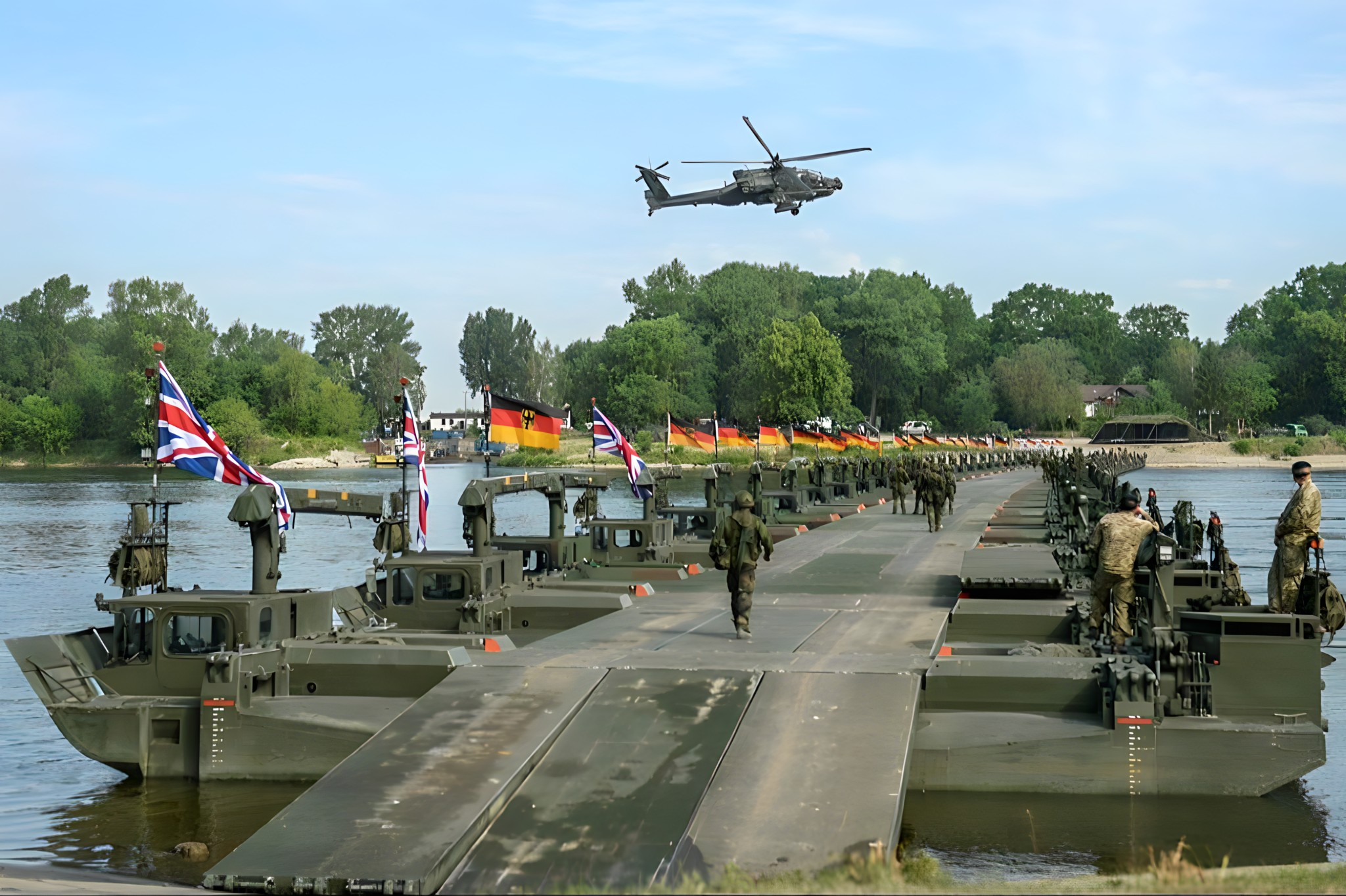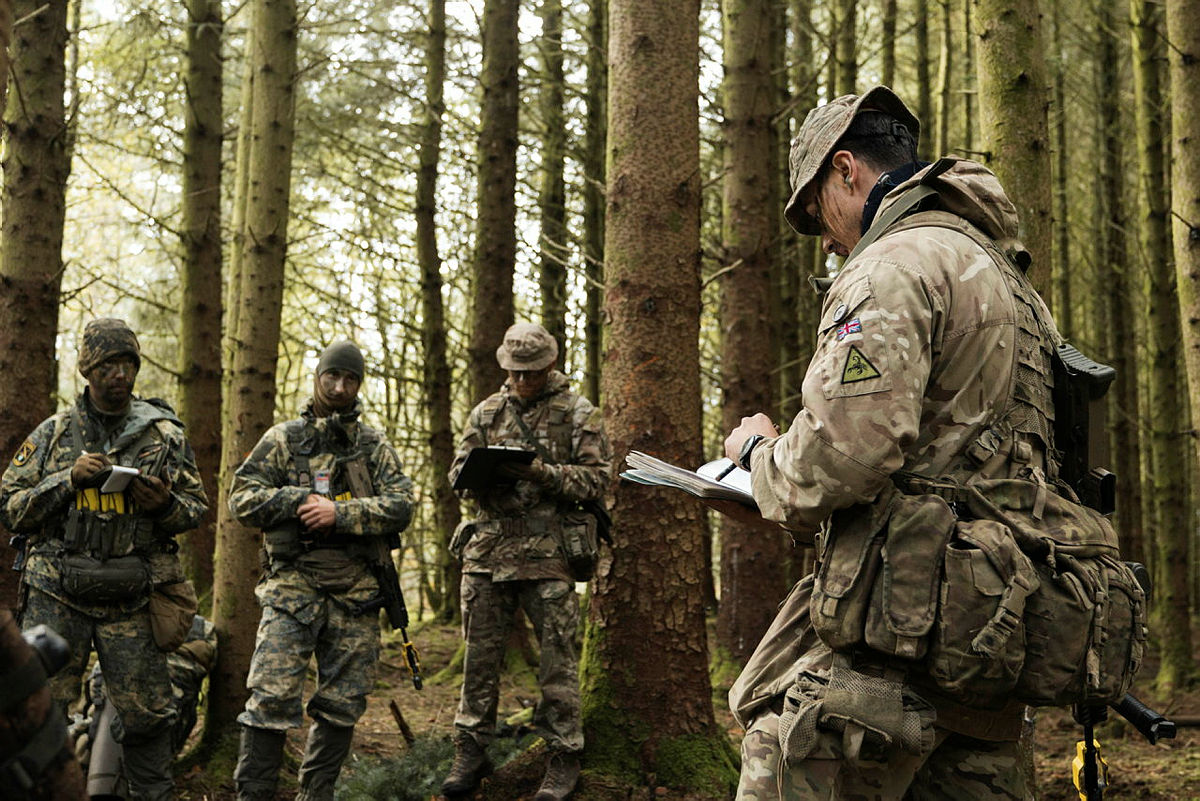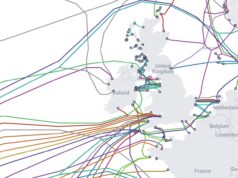A Combat Air Strategy will be launched to ensure Britain maintains a ‘world-leading combat air capability’, Defence Secretary Gavin Williamson announced in front of the defence select committee.
The MoD say they will work ‘across Government and closely with industry and international partners’ to explore the UK’s future Combat Air capabilities, building on the Industrial Strategy and refreshed Defence Industrial Policy launched last year.
They say the strategy will examine the operational capability needed in the future and the skills and resource required to deliver it.
Defence Secretary Gavin Williamson said:
“Since the birth of airpower, British industry has been crucial to maintaining our military’s world-leading position. As we celebrate 100 years of the RAF protecting our skies, it is fitting that we create bold and ambitious plans to help our brave Armed Forces keep us safe in the face of intensifying threats.
The Combat Air Strategy will bring together the best of British engineering, skill and design, and deliver a compelling vision for the future of air power.”
Chief of the Air Staff, Air Chief Marshal Sir Stephen Hillier, said:
“It is especially fitting that we launch the Combat Air Strategy as our Royal Air Force marks its 100th anniversary. Combat Air capabilities have been at the heart of the RAF’s capabilities throughout its history, and are constantly employed on operations across the world today.
This strategy will ensure that the RAF can continue to remain at the forefront of the high-end airpower technology and innovation we need to deal with future threats, working in close collaboration with UK industry and our international partners.”
According to the Ministry of Defence, the UK is already a world-leader in the air sector which accounts for 85% of Britain’s defence export orders. The industry is made up of close to 2,500 companies, generating more than £33.5bn in turnover and employing more than 128,000 people – some 26,000 of them in highly skilled research, design and engineering jobs.
Investment in combat air technology combined with the strengths of UK industry has resulted in the UK being the US’ only Tier 1 partner on the F-35 Lightning II programme, with British industry building around 15% of every F-35 which is built. The UK has been able exploit the operational capabilities of the aircraft, while reinforcing UK industrial capability, skills and wider economic prosperity (despite campaigning for Belgium to purchase Typhoon over the F-35). The UK however is one of the four partner nations in the Eurofighter Typhoon programme.














So cuts.
Right. Fewer F-35B but maybe some A models down the line?
harry – Please define what ‘cuts’? And especially in air power please. Are these ‘cuts’?
More Typhoons coming out of store
New Typhoons still being delivered
Massive upgrades of Tranche 2+ Typhoons to replace Tornado
8 new Poseidon Maritime aircraft
138 F-35 aircraft
Taranis / Magma UAV technology investment
New Wildcat helicopters
22 new A400M freighters
14 new Voyager tankers
Recent C-17 freighters
And much more in infrastructure, training aircraft and personnel support for the RAF.
Why do some people think its ‘really really clever’ to mock our Defence people and run down what we as a country achieve?
Because what the DOD says they want and will buy and reality are often two divergent paths.
The DOD?
Because the MOD & HMG commonly use deceit to mask capability reductions or gaps. Great to get P-8 Poseidens but loonacy to leave the UK with nil MPAs for years. 138 F-35s sounds good but the reality is that number will never be operationally availiable as it’s the total aircraft purchased over it’s 30+ years in RAF/RN service.
If the equipment purchases you list were not made, existing equipment would be clapped out & ineffective. Mostly we’re replacing with less, reducing capability & cutting personel. Budgets increae due to inflation, poor value for money & the F-35 is eye-wateringly extortionately priced. Many major airbases in the UK have been flogged off so if we face a major conflict & aren’t nuked, it will take ages & cost a fortune to re-build their capacity elsewhere.
Have to say Frank this post reminds me of Macbeth…a tale told by an idiot full of sound and fury signifying nothing.
Nimrod was a disaster and decisive action needed to be taken. It’s called managed risk. Yes there were a couple of incursions by soviet subs but the overall story is of a succesfully managed capability gap thanks to help from Nato allies. And now in P-8 we will have the best MPA there is at the job and integration with the US and Norway.
Modern equipment is more reliable, you don’t need as many. Checkout where the RN is right now, everywhere from the Caribbean to Australia. Our OPVs are at sea 200 days a year.
138 F-35 was always a program total. What point are you making here?
The F-35 is not extortionately priced. It is cheaper than its 4th generation predecessors.
We have enough airfields. If they are nuked we can all stop worrying.
Do you troll for the Moscow undermining UK morale department?
Thanks for the rational post Paul, there aren’t enough of them on here.
Hi Paul, Let’s keep in mind that all views posted on this forum are respected.
On the subject of Nimrod, I agree it was a troubled programme, but it was indeed lunacy to cancel the aircraft, and close RAF Kinloss, when the aircraft was working and on the verge of service – and £4B had been sunk into development!
Check our Dr Sue Robertson’s evidence to the Defence Committee in Feb 2011 for an authoritative view of the Nimrod MRA4.
Such a cack-handed cancellation damaged the reputation of the UK aircraft industry, and UK armed forces.
As for the F-35B, it’s going to be an outstanding combat aircraft – but it’s price seems unclear, and has been variously quoted as between £160M – £240M! (For comparative purposes, a late model Typhoon has a fly-away cost of about £90M). There is a debate to be had about capability and force levels.
Incidentally, despite Frank’s concerns, my morale is fine!
Spot re Nimrod Alan. The bad press for MRA4 seems to have stemed from one dodgy Telegraph article.
Were the treasury in attendance?
So many people seem obsessed with this idea of getting the F35A.
Change the record please. It’s as bad as the fantasy fleets we get on here daily.
The RAF/Navy managed fine with the Harrier in the Joint Force Harrier structure, the F35B is a significant improvement over the Harrier in every regard and so I just don’t see why the MOD would bother with a fleet within a fleet. If we managed with the Harrier I’m sure we’ll ‘cope’ with the F35B.
Of course we will cope with F35B.
Issue is at the time of the JFH there were also 3 Squadrons of Jaguar and 7 of Tornado GR4, which was the UKs main interdiction aircraft.
They are or will be all gone soon.
Any purchase of F35A should only take place once enough F35B are purchased to surge one carrier with a full complement of aircraft.
Danielle – and the Typhoon replaced the Jaguar and will soon replace the Tornado. So I agree with raftastic that we really do not need the F-35A. It offers nothing that the Typhoon can deliver in bigger quantities when the GA role is needed or compare to the Typhoon in QRA role either. And forget any A2A ……
Any sensor advantage can be delivered by F-35B. With the ‘Terrible Twins’ of Lighting II and Typhoon we have the makings of probably THE most effective and accurate ground attack and suppression air capability in the world.
Hi Chris, The F-35 has one significant advantage over Typhoon, it allows the UK to join the USAF/USN on the first night of operations against an advanced integrated air-defence network.
(Mind you, I don’t know why some other countries are buying it; politically they will never take such a lead role in coalition warfare, and would be so much better off with the Typhoon – an outstanding 4.5 generation jet).
I disagree with some other posters on the forum, I believe the F-35A is a much better fit for the UK, and after 70-75 of the B variant have been delivered (surely enough to sustain surge operations off as single QE class carrier), we should switch the order to the A class.
I don’t understand the fears about a “fleet within a fleet”; this is not new for UK air-forces. Back in the early 1990s – we had eight different combat jet types , or variants, in service: – Tornado IDS, Tornado ADV, Phantom F-4 (Spey), Phantom F-4 (J79), Jaguar, Buccaneer, Sea Harrier and Harrier II
If there is a will, we can certainly manage just three types …..
As highlighted by Gabriele on his blog around timeframe 2024 2025 spending in equipment budget on combat air drops significantly so just where is the money coming from for the full complement of 138 F35 never mind other stuff?
The GR4 wasn’t an interdiction aircraft…….did you mean F3?
We have Eurofighter for that now anyway….albeit we should have more, but buying more of an aircraft is only part of the cost, you need more personnel for them and personnel are far more expensive than the kit they service/fly/use etc.
The main point being……if we buy F35A I’ll eat my hat, and no amount of bleating on a defence forum is going to change that.
Sorry to be blunt, but it’s getting boring now.
No I did not mean the F3, those formed at one time an additional 7 Squadrons. 2 Coningsby. 3 at Leeming. 2 at Leuchars.
I am curious why was GR4 not an Interdiction aircraft?? Of course it was an Interdiction aircraft.
Interdiction means to deny something, and the main role of Tornado GR1 in the Cold War was denial of enemy installations, airfield denial using Jp277 and hitting targets in Poland and Eastern Germany.
Even though GR1 became GR4 to include precision strike using LGB at higher altitudes does not mean GR4 was not an interdiction aircraft. It was built for it just like F111.
Whether the F35A is purchased remains to be seen.
Well, one idea for strengthening both the air combat strategy and the national industrial strategy would be to forge ahead with Taranis by ourselves.
Bang on.
Exactly, we need to be able to design and build our own aircraft here in Britain (amongst other things).
Agree. Quite happy with 80 – 90.
Apologies, I saw/see interdiction in the Air sense, as in interception of enemy aircraft.
Of course you’re entirely right the GR4 was and is used to great effect in the air to ground role.
However I standby that we will never get the A model.
As for being totally broke, I think that’s a hyperbolic, true we aren’t exactly flush and rolling in it, but it seems we’re in better shape than our European cousins.
You’re posting under a different name than raftastic but assume its you!
No probs mate.
You might well be right re F35A. I’m not fussed either way myself as long as F35B is purchased in the 80 to 90 quantity range otherwise we hamstring the carriers we just spent a fortune on.
Lol, yeah sorry I 2 usernames depends on which device I use depends on the default.
Are always an idiot?
We should sell the Tranche 1 Typhoons to Poland for a knock down price and order more Tranche 3 with asea radar. Having demonstrated commitment to the aircraft we can point out to the Germans and Belgians that orders from them would produce a lower price and jobs all round.
nice idea, but I think Poland will want better than T3. The air war will be fought over their heads!
better than T1 I meant
Assuming a tranche 1 typhoon is a worthwhile enhancement of their existing aircraft in terms of capability and costs of ownership, and I think it is then we could make them an offer they can’t refuse. Give them the Tranche 1’s for a servicing and spares deal. And throw in joint training with the RAF. Sell them like you would sell a new car these days, on an operational lease. At the end of 5 years they are yours or you can trade in for Tranche 2-3-4 models.
While the Typhoon is beyond doubt more capable, there is no point massively increasing your support footprint on an aircraft to do precisely the same job as the F16. Financially it makes no sense.
Only the Arabs take this route to swerve possible sanctions by state players.
I am sure they will buy a second batch of F16’s and upgrade the whole fleet to V standards.
Strategy should be a decent number of F35Bs. At least 90 in active service then retain Eurofighter and continue to develop this now multirole airframe.
No way should we purchase F35A. RAF would love that to pull the rug from under the navy carriers and undermine carrier strike. If the idiots in the MOD go for a force of F35As without an adequate order for the superior operational flexibility of the B version then costs will rocket.
We would need different training, different spare parts etc etc you simply double the cost.
As for personnel being more expensive then equipment. Really?
Do 150 RAF engineers each earn £1 million a year, nope. The equipment is exquisite and very expensive to maintain. Boots on the ground much less so.
That is why the RN not being allowed an uplift in manpower to retain Ocean and batch 1 river class is so maddening.
It’s all about the madness modern public sector accounting were by capital costs ( buying stuff) are seen as far more acceptable than ongoing costs ( staffing) it’s the same everywhere the government will splash out on one off spending commitments like it’s got a magic money tree, as for a asking for a commitment for ongoing costs central groverment shuts the purse quicker than you can say “what about the people who actually do the job and keep the stuff working”. That’s why all our lovely nhs shuts most of its expensive kit down at the weekend……..£ 10 million CT scanner of course you can, £50k a year for staff to run it at the weekends not a chance…….
I’m not too sure about dismissing buying the F35A.The priority at the moment is obviously to equip the Carriers with enough F35B,as far as I’m aware spread into 4 Squadrons (2 x FAA,2 x RAF).Out of a projected buy of 138 Aircraft I think we have ordered so far 48,would these be enough for 4 operational Squadrons I would say not so when the next order is made I would expect more F35B’s to form most of that order.The pressing issue after that is the retirement of the Tornado fleet after 2019 which leaves the MOD with several options -(1) Order a new fleet of Aircraft as a complete replacement,or (2) task existing Aircraft with the roles that Tornado carries out (this is already underway with the upgrades/improvements to the Typhoon) .If option 2 is the way ahead – most likely in my opinion then another order for Typhoons would be ideal (but extremely unlikely) or the F35 buy can be adjusted to suit (most likely).In that case I fail to see any problem in buying the F35a,as obviously the Tornado fleet was land based and all recent ops are flown from land bases Akrotiri in Cyprus being an obvious example.The reason’s for the ‘A’ are it has a longer range plus a heavier payload,its not handicapped by the complexities of all the STOVL equipment carried by the ‘B’ plus its actually cheaper to buy.Its true that the advantages in commonality between variants of the F35 were exaggerated (like most of the programme to be fair) and some training and maintenance arrangements would have to be changed for sure but lets not forget were talking about variants of the SAME aircraft – I cant see how it can be called a fleet within a fleet to be honest , was never a problem with the F3/GR1/GR4 Tornado or the FRS2/GR7/GR9 Harrier admittedly in more affordable times.I think an order for enough F35a to equip 3 or even 4 Squadrons would be sufficient,im not sure that the improved infrastructure at RAF Marham will accommodate such a fleet,maybe another base would have to be suitably changed as well but its not as if were short of redundant airbases at the moment.
I agree with this. I’m quite happy with either all B or a mix if B and A but ONLY if enough B have been purchased for the carriers.
The UK an Economic Disaster? errr I think not. Look around at other countries around the world. Yes we could be doing better, but hardly an economic disaster.
[…] To read more… […]
TH – the economy’s growing, unemployment’s been falling for years (despite the most recent rise), more people are in work than ever before, productivity is rising, as are wages. Sorry to disappoint you but that isn’t an “economic disaster”.
We are in an economic disaster, but also in denial. If you have huge debts that continue to grow, sooner or later that problem will hit home hard. As interest rates raise the later part seems to be getting sooner. If you don’t believe it, look at Greece and what happened there or the US subprime. In both cases I can guarantee people were looking round and saying well other people are in the same boat, which whilst true doesn’t change the reality of how debt works.
Yes unemployment is dropping and wages are growing but none of this appears to be changing that the national debt is still growing. It is entirely possible that we are in reality topping up the economy with jobs by borrowing more to avoid cutting public spending cuts, which can’t continue for ever. Combine that with increasing wages also means civil servants wages are increasing and so increasing the rate in which the debt grows.
Sooner or later the interest rate will raise to a point where we can’t afford to pay the interest on the debt and the country will default, and from there who knows if we will ever recover. We won’t be like Greece where they were a member of the EU and so were bailed out or Ireland where we could afford to bail them out, post brexit we will be alone.
Alone – the IMF?
Steve – yes our National Debt increases while we run a deficit. Its why the Government are trying to reduce and get rid of it. The Labour Party call it ‘Austerity’ when it is no such thing. They criticise the Tories for failing to reduce the £150 Bn a year deficit they left behind quick enoiugh….. I mean you couldn’t make it up! Like we could cut UK Government spending by £150 Bn in one year without causing an economic catastrophe. Its now about £35 Bn a year. And, incidentally, its also why ‘yields’ on Bonds are at historic lows because we are a safe place to lend money to (via those Bonds or GILTS).
Its why various budgets, like Defence, are under strain as we try to ‘live within our means’. But the deficit we run now is less than in pre 2008 days and is actually being reduced faster than even the OBR forecast. And to compare the UK now with the US subprime situation is a false argument as regulation now rests with one body and the banks have had to radically overhaul there cash situations. And lets not forget only two banks actually failed here – RBS and HBOS (taken over by Lloyds on a nod & wink from Gordon).
That this country can recover from the s**thole it was in back in 2010, keep spending on Defence despite having to make hard decisions and keep the economy growing to provide all those jobs and growth (and keep interest rates at an all time low) is no mean achievement. The National debt is big but nowhere near that of other major economies in GDP terms.
And I wondered when ‘Brexit’ would be blamed …. to compare the UK with Greece makes great trigger words but no argument. Please remember the UK even in 2009 was baling out Ireland and that was also in the Euro. So where was the EU for Ireland?
Trying to remove the deficit is not the same thing as achieving it, and the date that they claim to target for this, keeps getting pushed back and if interest rates raise this will continue to happen.
Brexit hasn’t got anything to do with it, we got into the mess way before it was even on the table, and to a point it caused brexit rather than the other way around. Will Brexit help or hinder the economy, no one really knows, but either any improvement will take decades to really appear, its not like other countries are lining up to get better trade deals with us.
The IMF won’t be able to bail us out, its not big enough, and on top of that they don’t bail anyone out they are a bank, what they do is loan the country money with high interest rates, which is what caused the mess for Argentina and most of Africa/latam. The EU did semi bail out Ireland (we just gave more to ireland than our share of the EU bail out), we just gave them the money without caveats and at much better rates, compared to the EU.
We need to sort our house out, before we start investing heavily in anything and unfortunately that will take a lifetime or more to achieve. Right now all we are doing is kicking it down the road, for the next government to deal with and the next.
Ok we can inflate our way out of the problem, in the short term, but in the longer term all that does is increases the interest rates that we have to pay on the debt.
It’s a real problem and one that might bite us in our life times, but hopefully not.
Whilst it’s true we are facing a tightening of the belts still along with uncertainty in the future (from on extreme to the other depending on who you believe/ vote for), I think it’s wrong to look say we’re in economic disaster. Yes National Debt is rising but borrowing has reduced dramatically from a high of 10.2% of GDP 2009-10 to 2.2% of GDP 2016-17. Less borrowing means we are considered less of a “risk”.
Comparing our national debt as a % of GDP with other countries is also worthwhile as it allows us some indication of what may happen to the UK. Japan for example has a national debt of 225% and has a defence budget of $46.1bn. The UK has a national debt of 80% with a defence budget of £45.4bn ($63bn or so). One more example is Canada with a national debt of 98.8% and a defence budget of $14.6bn. Neither of these countries could be considered in financial turmoil and yet both have higher national debts, Japan being very comparable in defence spend.
How much cheaper is the A version though? Would those savings not offset additional training, parts and maintenance costs?
I’m pretty sure they will be, from what i saw the savings were reasonable but not likely to make the difference.
Saying that saving today for extra cost tomorrow kinda seems the order of the day.
I thought A model was due to come down to under 100 mill whilst B model was 180 mill.
Tim.
No one knows!
The costs are deliberately kept secret. Costs are falling.
Last I had read on a defence website was that the F35A was likely to achieve the £80 million mark per aircraft by ordering in 2025 whilst at that time the B version will be circa £105-110 million. Costs are falling. For a comparison a Eurofighter tranche 3 is £130 million each.
However once factored in spare parts, duplication of training, undermining carrier strike and the operational flexibility a vstovl aircraft provides I think sticking with the B version is advisable.
‘world-leading combat air capability’ however this is just a report and no date or budget allocated to its outcome.
Sentry AEW – Behind the French & US models
Combat Aircraft – RAF currently field 192 combat aircraft, made up of 87 Tornados; 53 Tranche 1 Typhoons; and 52 Tranche 2 and Tranche 3A Typhoons
The 87 will be retired and question marks remain as to how many F35 will be procured. One thing for certain is the F35 unit price is dropping, but the maintenance & cost per flight hour is currently higher than 4th generation platforms (Projected to stay this way).
I suppose the question is, is this number comparable to other nations? Israel, Saudi Arabia, South Korea, Germany & France
150 odd Combat aircraft too few in my opinion, once the tranche 1 retires.
I would be content with a 200 aircraft fleet so we need around 90 F35.
Just for the info, i read this a few years ago, regards the F35:
https://news.vice.com/article/what-does-the-f-35-mean
Took me a while to find it, there’s also a short video showing how the F35 will work alongside the F15 and B52, if I can find that also, I’ll link it in.
Russia is in a far worse state!
The whole A vs B argument is a joke and highlights why there is a need to change how the MOD and the armed forces work. The idea that the air force wants to undermine by carriers, is just stupid. They should all be planning their expenditure on what is best in a combined warfare situation, and not what is best for their service. Neither service can fight without the others and that is how the expenditure and planning should be planned.
Hi Steve, I’m a supporter of a dual-buy, and I don’t see the issue through the prism of
inter-service rivalry.
Our Queen Elizabeth class carrier is already much loved (including by myself; I high-tailed it across to the Forth on the first night it was floated out!). But as Paul explains above so well, the F-35B is a costly and complex machine, and its flexibility comes with some performance penalties. We’re primarily using the technology to operate fixed-wing off “Lizzie” & “Taffy”.
But nearly always – we don’t need aircraft-carriers to deploy our air power; not in Gulf I & II, Afghanistan, Bosnia, Kosovo – not even Libya.
Evidence suggests we will still mostly fly combat operations from air-bases; we won’t always need STOVL, so why hobble our strike power by selecting an entire fleet comprised of only the F-35B?
It’s not as if a dual-buy is so unusual, as Julian states below – the USA and Italians are already implementing such a policy.
I know others will disagree – but that’s my rationale for supporting a dual A/B purchase.
It’s not to engage in some supposed squabble between the RAF and Royal Navy, it’s really about getting the biggest bang for our bucks.
Hi Alan,
I have no issue with a split buy – as long as there are 96 F35B’s available for the carriers.
Each carrier can hold over 70 F35’s (See wired article) and whilst I accept we are unlikely to load to that level – I do think 48 per carrier is the ideal volume, between having the right operational tempo and getting vfm from the carriers.
I think we should look at operational fleets of 128 of both variants to allow for maintenance etc. Clearly this is far more than the UK government wish to purchase at this point, but we are re-instating a carrier capability (b fleet) which is incremental and replacing tornado (a fleet).
I do think that a single fleet of b’s managing a fleet of taranis onto target is really the way to go both from a budget and force multiplier point of view – at this point the F35b has defensive weapons and is using its arrays to put the taranis onto target from a stand off position – range would be mitigated by an additional fuel tank instead of bombs.
My assumption is Taranis comes in circa £20-40m at which point an F35b can control 2-4 of these and the UK gets scale and cost efficiency.
If we took this approach a single force of 128 operational F35b’s (144 total) would be optimal with at least 256 Taranis (which could and should be made in the UK).
If we are bold with this – we could get a jump on everyone else and sell to others who are currently buying the F35.
I don’t know anything like enough to have an opinion on the all F35B vs mixed A/B fleet question and possible issues with running a mixed fleet but I will make one observation….
Depending on timing we potentially have the option to look at early results of how that might pan out in practice since the Italians are planning a mixed A/B buy. According to Wikipedia the latest plans are 60 As and 30 Bs although, as with pretty much every country, there is the constant threat of those numbers getting scaled back further.
I know that the USA is the other mixed operator but its numbers are on such a vast scale compared the U.K. that I’m not sure we could learn any useful lessons from their experiences.
@Alan Reid. Reprimand accepted.
@Frank62. Apologies, I overreacted there.
LOL, good lad.